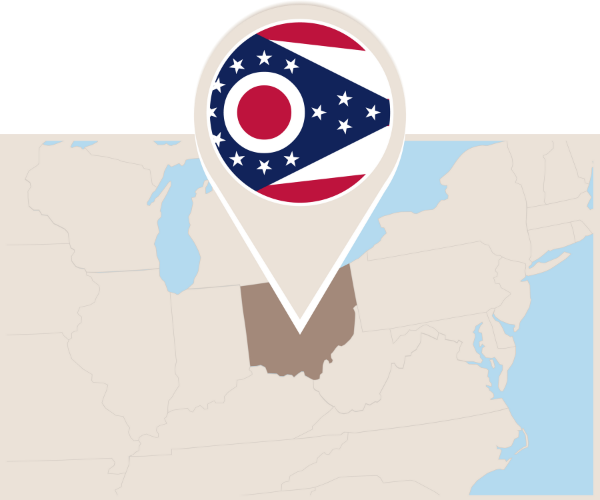Ohio Pharmacy Technician License Requirements (2025)
How to Become a Pharmacy Technician in Ohio
Step-by-step guide to Ohio pharmacy technician requirements, training programs, and the fastest path to becoming a Certified Pharmacy Technician (CPhT).
Learn how to qualify for your license, choose the right training program, and start your career in pharmacy faster and more affordably than you might think.
Learn how to qualify for your license, choose the right training program, and start your career in pharmacy faster and more affordably than you might think.

Table of Contents
Overview of types of pharmacy technicians in Ohio
Pharmacy Technician
Trainee
The starting point for most new technicians. Trainees are authorized to perform basic, supervised duties while completing the education and hands-on experience required for higher levels of registration.
Registered Pharmacy Technician
A mid-level credential for technicians who have completed an Ohio Board-approved training program. Registered technicians take on more technical duties and can perform limited clinical tasks under a pharmacist’s supervision.
Certified Pharmacy Technician (CPhT)
The most advanced credential recognized by the state. Certified technicians meet national competency standards, can perform a broader range of pharmacy operations, and typically qualify for higher-paying, specialized, or leadership roles.
Pharmacy technician trainee (entry-level)
-
Requirements for licensure
To register as a pharmacy technician trainee in Ohio, you must:- Submit a complete application through the Ohio eLicense portal, following all instructions provided by the State of Ohio Board of Pharmacy.
- Pay the $40 registration fee (as of 2025)
- Be at least 18 years old, or 17 if enrolled in an approved high school CTE program
- Have a high school diploma or GED, or be currently enrolled in high school
- Complete a criminal background check
-
The trainee license is valid for up to 18 months and cannot be renewed. During this period, trainees are expected to complete an approved training program and meet the requirements to upgrade to a Registered Pharmacy Technician or Certified Pharmacy Technician license.
-
Scope of practice
Pharmacy technician trainees may perform basic, supervised duties that support the pharmacist in preparing and dispensing medications. Pharmacy technician trainees may:- Accept written, faxed, or electronic prescriptions
- Enter and retrieve prescription and patient data in the pharmacy system
- Count, pour, and label medications
- Stock and retrieve drugs from inventory
- Perform sterile and non-sterile compounding under supervision
- Package and sell prescriptions
-

Registered pharmacy technician

-
Requirements for licensure
To qualify as a registered pharmacy technician in Ohio, applicants must:- Submit a complete application through the Ohio eLicense Portal and pay the $65 registration fee (as of 2025)
- Be at least 18 years of age
- Have a high school diploma, GED, or equivalent
- Complete a Board-approved technician training program, or have at least one year of active work experience as a pharmacy technician in another state within the past five years
- Complete a criminal background check
-
Scope of practice
Registered pharmacy technicians may perform all duties allowed for pharmacy technician trainees, plus additional responsibilities that reflect their higher level of training. These include:- Requesting refill authorizations from a prescriber
- Administering immunizations
- Stocking automated dispensing units, floor stock, and crash carts
Certified pharmacy technician (CPhT)
-
Requirements for licensure
To qualify as a certified pharmacy technician in Ohio, applicants must meet all of the same requirements as registered pharmacy technicians, plus the following:- Hold current national certification from a Board-recognized organization such as the PTCB
- Submit a complete application through the Ohio eLicense Portal.
- Pay the $65 application fee (the fee is waived when upgrading from registered status)
-
Scope of practice
Certified pharmacy technicians may perform all duties permitted for registered pharmacy technicians, along with several advanced functions that reflect their certification and expanded scope of responsibility. These include:- Accepting verbal prescription orders for non-controlled substances
- Transferring non-controlled prescriptions to and from other pharmacies
- Contacting prescribers or their agents to obtain clarifications
- Performing diagnostic laboratory testing (CLIA-waived tests)

The major benefits of becoming certified
Comparing Ohio pharmacy technician roles
Approved pharmacy technician training programs in Ohio
Option 1: Employer-based training programs
Benefits of employer-based programs
Challenges of employer-based programs
Advantages of getting PTCB certified first
Option 2: ASHP-accredited programs
Option 3: Federal training programs
Option 4: Approved Ohio public high school programs
References:
What is a PTCB certification
Earn higher pay and better job stability
Certified pharmacy technicians are in high demand throughout Ohio’s retail, hospital, and clinical pharmacies. CPhTs typically earn higher starting wages and enjoy greater job stability than non-certified technicians. Employers know that certified staff can handle complex responsibilities, adapt quickly, and maintain patient safety.
Stand out when applying for trainee positions
Pharmacies across Ohio receive many applications for limited trainee openings. Having your CPhT credential signals to hiring managers that you already understand pharmacy law, medication safety, and workflow fundamentals. This gives your application an immediate advantage, helping you secure a trainee position faster and begin your hands-on training sooner.
Gain professional
recognition
Displaying “Certified Pharmacy Technician (CPhT)” on your badge instantly communicates professionalism and competence. It shows pharmacists, patients, and employers that you meet national standards and are committed to providing safe, high-quality care.
Become more confident and job-ready
Preparing for the PTCB exam gives you a strong foundation in pharmacy operations, federal regulations, medication safety, and dosage calculations. By the time you earn your certification, you’ll feel confident applying these skills in real-world pharmacy settings and ready to take on patient-focused responsibilities from your very first day.
Unlock better job opportunities
With your PTCB certification, you’ll qualify for positions in hospital pharmacies, long-term care facilities, specialty compounding labs, and national retail chains that require certified technicians. In Ohio, certified pharmacy technicians can also perform CLIA-waived diagnostic tests such as flu, strep, COVID-19, HIV, and pregnancy testing. Becoming a CPhT opens the door to highly desirable and better-paying clinical roles.
Build a pathway for career advancement
Certification is the key step toward long-term professional growth. Many certified technicians move into advanced roles such as lead technician, inventory specialist, or sterile compounding expert, while others use their experience as a foundation for pharmacy school, nursing, or other healthcare careers. Each step you take as a CPhT brings you closer to lasting success in the pharmacy profession.
How to become a certified pharmacy technician (CPhT) in Ohio
Becoming a Certified Pharmacy Technician (CPhT) in Ohio is the key to unlocking the best career opportunities, higher pay, and greater responsibility in pharmacy practice. While Ohio’s licensing process can seem complex, there’s a clear and efficient path to follow.
Below is the fastest and most affordable way to meet Ohio’s requirements and reach the top level of pharmacy technician registration.
Write your awesome label here.
Why getting certified first gives you an advantage
Save time and reduce training costs
Getting certified before applying for a trainee position allows you to skip the classroom portion of Ohio’s employer-based training programs. Since the didactic requirement is waived for certified technicians, you’ll complete only the 300 hours of hands-on experience, saving both time and tuition costs.
Stand out in a competitive job market
Pharmacies across Ohio receive many trainee applications, but certified candidates rise to the top. Holding your CPhT credential signals to hiring managers that you’re already knowledgeable, motivated, and ready to contribute from day one.
Advance faster and earn more
Certified pharmacy technicians qualify for a wider range of positions, enjoy higher starting wages, and are often considered first for leadership or specialized roles. With your certification, you’ll gain stability, long-term growth potential, and a clear path toward career advancement.
Why enroll in the 1st Pass CPhT Course
The 1st Pass CPhT Course is a PTCB-recognized online training program designed to help you pass the national certification exam and start your pharmacy career with confidence. It’s self-paced, affordable, and beginner-friendly, so you can complete it entirely online while working or attending school.
The course provides comprehensive preparation for the Pharmacy Technician Certification Exam (PTCE). Upon completion, you’ll receive a certificate of completion and be eligible to take the PTCE and earn your Certified Pharmacy Technician (CPhT) credential.
While completing the 1st Pass CPhT Course alone does not fulfill Ohio’s formal Board-approved training requirement, it allows you to meet those requirements faster. Once you are PTCB-certified, you can:
Ohio pharmacy technician licensing FAQ
Do you need a license to work as a pharmacy technician in Ohio?
Yes. All individuals who perform pharmacy technician duties in Ohio must be registered or licensed with the State of Ohio Board of Pharmacy. You cannot legally work as a pharmacy technician without holding one of the state’s three valid credentials: Pharmacy Technician Trainee, Registered Pharmacy Technician, or Certified Pharmacy Technician (CPhT).
What are the requirements to get a pharmacy technician license in Ohio?
To become licensed or registered in Ohio, you must:
- Be at least 18 years old (or 17 if enrolled in a Board-approved career and technical education (CTE) pharmacy program)
- Have a high school diploma, GED, or foreign equivalent
- Complete a Board-approved training program (employer-based, ASHP-accredited, military, or public high school program)
- Pass a criminal background check
- Submit a complete application and pay the required fee to the State of Ohio Board of Pharmacy
What types of pharmacy technician training programs does Ohio accept?
The Ohio Board of Pharmacy recognizes four types of approved programs:
What’s the cheapest pharmacy technician training in Ohio?
The most cost-effective option is through an Ohio employer-based training program.
These programs are often offered by large retail chains, hospitals, or health systems and allow you to earn income while completing your training.
Because they’re sponsored by your employer, there’s no tuition cost, you gain real-world experience under a pharmacist’s supervision while meeting Ohio’s practical training requirements. If you’re already PTCB-certified, you can skip the classroom (didactic) portion of this training and focus only on the 300 hours of hands-on experience, completing the process faster and at no cost to you.
Is PTCB certification required to work as a pharmacy technician in Ohio?
PTCB certification is required to become a Certified Pharmacy Technician (CPhT) in Ohio, the highest level of registration recognized by the state. However, you can still begin your career as a Pharmacy Technician Trainee or Registered Pharmacy Technician without certification.
Do I need prior pharmacy experience to take the PTCB exam?
No. You can take the Pharmacy Technician Certification Exam (PTCE) without any prior work experience. All you need is completion of a PTCB-recognized training program, such as the 1st Pass CPhT Course.
What is the minimum age to work as a pharmacy technician in Ohio?
You must be at least 18 years old to apply for a pharmacy technician license in Ohio. However, individuals who are 17 years old and enrolled in an approved high school CTE pharmacy program may apply for a Pharmacy Technician Trainee license and begin gaining experience before graduation.
Do I need a high school diploma to become licensed in Ohio?
Yes. You must have a high school diploma, GED, or equivalent foreign diploma to become a Registered or Certified Pharmacy Technician. However, high school students may apply for a trainee license while still enrolled in a Board-approved CTE pharmacy program.
How long does it take to become a certified pharmacy technician in Ohio?
If you complete a PTCB-recognized training program (like the 1st Pass CPhT Course) and become certified before applying for a trainee position, you can typically finish your 300 hours of required practical experience in about eight weeks of full-time work. This means you could become a Certified Pharmacy Technician in as little as three to four months.

